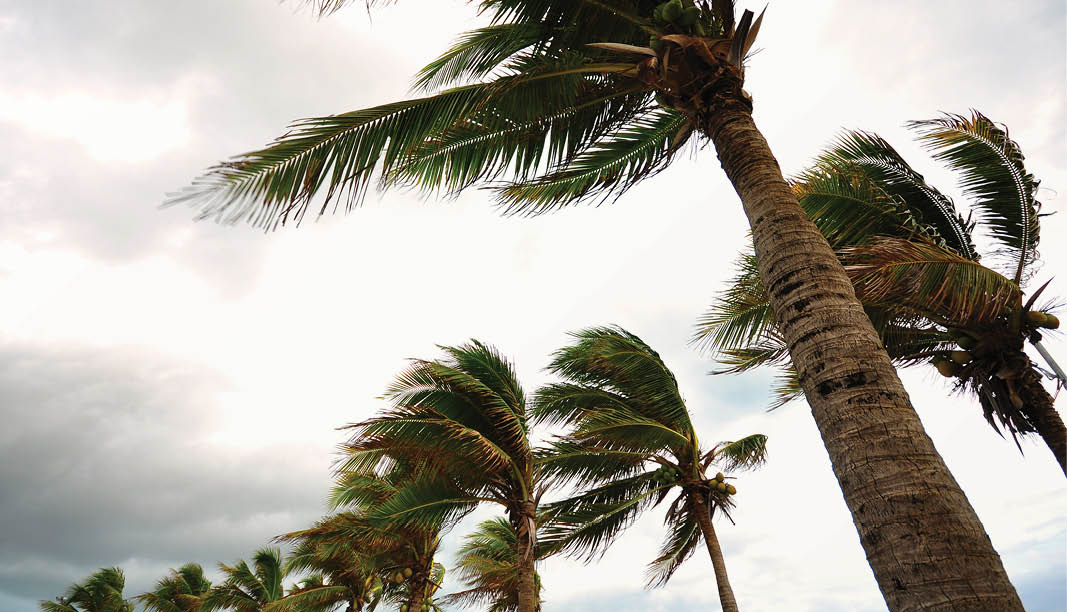
Our Approach
We see insurance as a way to minimize life's risks so you can maximize its rewards.


Protect your legacy. Safeguard your future.
Informed by nearly a century of experience, Alliant Private Client partners with you—or your advisors—to manage your life’s complex risks. Our clear, focused process results in smart, customized insurance solutions. Though our philosophy is local with licensed professionals in all 50 states, our reach is global through an international partnership with Brokerslink.
Our risk review process
After reviewing any existing insurance programs, we will ask about your passions, financial goals, lifestyle, challenges and comfort with risk. Next, we will outline your exposure and vulnerabilities, then help you make informed, strategic coverage choices. Finally, leveraging our deep market connections and technical expertise, we will negotiate effective and efficient programs for a host of assets and potential liabilities.
- Review existing insurance
- Clarify needs, challenges & risk tolerance
- Assess exposures & vulnerabilities
- Create coverage strategy
- Negotiate new policies
- Provide comprehensive claim services
An advocate in your corner
Should a loss occur, your private client team will respond rapidly and remain personally involved throughout the recovery process, from mitigating damage to finalizing a settlement and everything in between.
Claim advocacy

Experts in protecting the things you love
Our expertise encompasses nearly every passion and pursuit, allowing us to build personalized insurance solutions that reflect your interests and needs.
Our expertise

Unique perspectives from our experts

Why creating a home inventory is worth it
Take a moment to consider the rooms in your home. Could you list every piece of clothing in your closet, including designer labels? What about the vintage of each wine in your cellar or the number of sterling silver flatware pieces in your drawers? If you answered “no” — and chances are, you did — you’ve just uncovered the primary reason why we encourage every client to create and maintain a detailed home inventory. In the event of a total loss due to a fire, hurricane, or other disaster, this document is crucial for proving ownership. It not only streamlines the claims process but also accelerates your ability to replace the claimed items, all while providing invaluable peace of mind during an otherwise stressful time. If the idea of listing every item sounds overwhelming, you're not alone — and that’s precisely why we’re here to help! In this guide, we’ll walk you through the importance of a home inventory, what to include, how to create one, and how to store it securely. Why a home inventory matters While you can create a list after a loss, doing so is often overwhelming and emotionally draining. Trying to recall the contents of every room while coping with shock or grief makes an already difficult situation worse. Our clients who have proactively created home inventories have consistently found the claims process to be faster, smoother, and less taxing. If you don’t have one at the time of a total loss, a carrier will likely hire a third-party to sit with you and systematically recreate the contents room by room. Together, you will record brands, sizes, and quantities. However, this process will likely be delayed significantly, and potentially longer if you struggle to recall specific details. How to create a home inventory The goal of a home inventory is to document, in detail, everything you own. You can do this through written descriptions, photographs, videos — or ideally, a combination of these. Items to include: Collectibles, such as art, wine, and jewelry Electronics Furniture, rugs, decorative pillows, etc. Clothing, shoes, handbags, and accessories Books Kitchen items and appliances Miscellaneous objects in drawers and cabinets Outdoor items, including furniture, tools, equipment, and décor Key details to include: Physical description — measurements, size, color, material, customization Age Make and model Location and date of purchase Cost at acquisition and appraised value Best tools to build a home inventory Hire a professional. The National Association of Home Inventory Professionals is a good place to start to find someone to help you. Shoot a video walkthrough. Pan slowly across each room, capturing furniture, finishes, and artwork. Include all spaces, such as garages, closets, basements, and hallways, as well as open cabinets and drawers. Take four photos of every room. To build a comprehensive picture of the space, stand in every corner and point the camera towards the room. Don’t forget to include close-ups of valuable items. Write up a list. Sit in each room with pen and paper or a laptop (note: online templates are also available for this task) and record the contents of each room. Use relevant technology. Apps such as Magic Home Inventory, Memento Database, My Stuff Organizer, Nest Egg, Smart Inventory System, Sortly, and NAIC have been explicitly designed for this purpose. Whichever route you choose, take extra care with your most precious objects. For example, lay out each piece of jewelry separately on a table to photograph it. Where to store your home inventory Once created, your home inventory must be easily accessible, even if your home and devices are lost. Store a digital version in the cloud so you can access it without a phone or computer. If it’s a hard copy, keep it in a fireproof safe or store it off-premises. Similarly, keeping your inventory up-to-date is equally important as creating it in the first place. Over time, a houseful of possessions is likely to grow significantly. Add significant purchases to the list right away and take a more general stock of things annually. We sincerely hope you will never need to use a home inventory, but unfortunately, hope alone is not a strategy. Most people who have experienced a total home loss didn’t expect it to happen to them. In our position, we’ve seen all too often the value of being prepared. A current home inventory is a vital piece of that preparation, easing and expediting the road to recovery. ...
More info
What you need to know about wind coverage
These days, the proverbial “winds of change” have transformed into literal threats, causing significant and escalating wind-related damage. This damage is no longer confined to traditionally affected areas. To mitigate exposure, insurance carriers are now reducing coverage, which could impact your insurance program, regardless of your property’s location. Here are four key points to understand about wind coverage— and what actions you should take in the face of these shifting currents. 1. Wind damage escalates quickly. Severe winds can turn everyday objects, like lawn furniture or garbage cans, into dangerous projectiles capable of breaking windows. Once the integrity of your home is compromised, it can create a vacuum effect that sucks in debris and water, leading to extensive structural damage. Similarly, tiles torn from the roof by wind can open a hole, allowing rain to pour in and cause significant water damage. 2. High-wind events are impacting more regions. Climate change is leading to more frequent and severe wind events, even in areas that were previously unaffected. While Southern coastal areas like Florida, the Carolinas, and Texas are still most at risk, regions further north and inland have also been impacted. Hurricanes are becoming stronger, with more Category 4 and 5 storms. The Midwest, meanwhile, is also undergoing greater wind damage from intense convective storms and tornadoes. In all cases, weather models predict these trends will continue. 3. There are effective strategies to help windproof your property. Making your property as windproof as possible is crucial to minimize the likelihood of loss and maximize insurability. Even properties in high-risk areas can be better protected against Category 5 winds with the right measures. Many high-risk areas, like parts of Florida, have strict building codes that offer guidelines for wind proofing. Key protective measures include: Securing roofs: Regularly inspect roofs and address repairs promptly. Ensure roofers follow guidelines for nail-spacing and materials designed for high-wind resistance, and that construction conforms to the latest codes. Strengthening windows: Install high-wind-resistant windows or hurricane shutters. Clearing exteriors: Trim trees and branches near structures and regularly remove debris throughout your property. Before a storm, bring in outdoor items like lawn furniture, garbage cans, and anything else that could be tossed around. 4. Collaborate for the best coverage. Much like wildfire insurance in California, carriers are becoming increasingly cautious about covering wind-related damage. This trend, which began with the destruction caused by Hurricane Andrew in 1992, has led to more restrictive coverage each year. Wind coverage is generally a component of homeowner’s insurance, but some states, such as Florida, carriers can separate it, offering it with higher deductibles or excluding it altogether. Securing wind coverage can be both challenging and costly. Working closely with your broker is essential to determine the best strategies for covering both existing and potentially new properties. Our team has deep expertise in this market, which makes us best positioned to secure coverage for you, either through discrete policies or creative outlets like non-admitted insurance companies. Likewise, we are prepared to fight for your claims in situations, both clear-cut and otherwise. In today’s climate, understanding the specifics of your insurance policies is more crucial than ever. Many clients are opting for higher deductibles, hurricane deductibles, and certain limitations or exclusions to lower their premiums, which can leave them more vulnerable after a storm. If you have any questions about wind protection or your coverage, please reach out at your earliest convenience. ...
More info
Smooth transition for your valuable collection: a guide for collectors and heirs
If you are passionate enough to build a collection, you're undoubtedly just as committed to ensuring it remains secure long after you're gone. Protecting your legacy requires foresight, careful consideration, and proactive planning. Similarly, those who will inherit the possessions should also think ahead. The future of collections is something our team of dedicated experts addresses daily. Here’s their expert advice, whether you’re planning for the future or inheriting these treasures. How to ensure a smooth transition of your collection Before planning for the future, ensure that your collection is well-protected in the present: That means confirming that every piece is appraised, whether separately scheduled or protected by a blanket coverage. Given the increasing frequency of natural disasters, it’s wise to consult a risk management expert who can help you address unforeseen threats to your collection, even if you live in an area that has not historically faced such risks. Determine whether potential beneficiaries want what you have: This conversation must be frank and open, as the information is crucial to mapping out the future. If your beneficiaries do not want the collection, setting up a trust or LLC to manage a museum donation or auction-house sale is one possible next step. In either case, ensure proper interim storage and arrange for expert transport to ensure your collection is safe and secure until it reaches its next destination. Make sure all relevant documentation is in order: Gather all invoices, appraisals, provenance-proving documents, and an up-to-date schedule of items. Store all materials securely and let your beneficiaries know where they are kept. Consider a life insurance policy to maximize your beneficiaries' financial flexibility: In doing so, the policy can provide the liquidity needed to help heirs pay estate taxes, cover ongoing collection maintenance costs, and even facilitate a museum donation while compensating your heirs for their loss. Insurance can also help balance inheritances if not all beneficiaries wish to inherit the collection, ensuring that your wishes are honored and financial stability is maintained. Key considerations for those inheriting a collection Make sure there is no break in coverage: When a collector dies, it is important to look at the ownership of the art. Oftentimes, if the collection was in an individual name, the insurance may have to be amended to reflect their estate while it is settled. The executor should coordinate with the proper broker to reflect the estates or other appropriate ownership. After the collection is officially settled, the insurance should be updated to reflect the new ownership Secure proper transport: If the original collector hasn’t accounted for transport, be sure to hire experts with experience handling the specific kind of collection. If it’s art, secure a condition report before it’s packed and upon arrival to divulge any damage that might have happened in transit. Evaluate the specific risks your living environment presents to the collection: Implement the appropriate loss prevention techniques for your region. For example, in earthquake-prone areas like California, it’s important to use specialized protective measures, such as earthquake hooks for artwork, and develop evacuation plans to address other potential catastrophes, including wildfires or hurricanes. Additionally, educate your household staff on best practices for cleaning and handling valuable items to minimize the risk of damage. Consider where and how the collection will be displayed: Ask your broker to visit your home to provide guidance. They’ll tell you, for example, to avoid hanging art in front of panoramic windows, where it could be damaged by the sun, under a sprinkler, in front of a water pipe, or above a fireplace. If you entertain frequently, they will also steer you away from high-traffic areas. Explore options if you don’t want to keep it: There are many possibilities to consider, such as consigning pieces to an auction house, gallery, or private sale or donating them to a museum. However, ensure that you have secure storage during this transitional phase, and consult your broker to review contracts to clarify insurance responsibilities at each step of the process. Also, if you intend to consign pieces of uncertain provenance, be aware that sending them abroad could risk government seizure. Whether you are planning to pass down a collection or are inheriting one, as with any aspect of estate planning, proper forethought minimizes issues later on. If you have questions about managing the passing on or inheriting of a collection, please call us. ...
More info
Building resilience in today’s insurance landscape
Only eight days into 2025 and the landscape has continued to shift, causing many clients in Southern California and beyond to ask fearful questions about the insurance industry’s future and risk management. While we have all grown accustomed to watching natural disasters on our television screens or, unfortunately, even closer, few have left people feeling as uncertain as Southern California's recent wildfires. As risk management advisors, we strive to provide accurate information and offer best practices to help you navigate the next phase of the personal insurance market, wherever you may live. Trust that we have been ultra-responsive, with boots on the ground, working hand-in-hand with clients and carriers to get ahead of the situation. In Southern California, we anticipate that homes will be rebuilt with improved building standards to better withstand such events in the future, events that, make no mistake, are likely to continue in the face of a changing climate. Fortunately, new fire-resistant materials and other innovative products and technologies to monitor water flow, temperature, and electrical surges now exist to help mitigate risks. They should be employed in all homes. We are hearing from clients nationwide who are concerned about whether the insurance industry can withstand a catastrophe of this size. Rest assured, the ability to recover from such an event has been well modeled. The bottom line: insurance carriers are well capitalized. The industry will be okay. Exactly how the impact will be felt — locally and nationwide — is yet to be determined. Until more is known, we remain focused on helping clients everywhere with proactive loss control. In most circumstances, preventative actions will minimize future loss and heartache. Here are additional best practices we recommend to all our clients as the landscape continues to shift: Loop in your broker and family members. Whatever the situation, whether you are in the market for a new home, expecting a child, or considering filing a claim, we urge you to consult with your account executive. The more your insurance advisor knows about your future plans and shifting life stages, the better they will be able to help you protect your assets. Similarly, it’s important to have regular conversations about risk within the family. Children, especially teenagers, must understand the potential liability inherent in posting on social media, hosting a party (especially unsupervised events), driving, or college hazing. Minimizing unfortunate surprises also means ensuring spouses understand your insurance program's details. Perform regular policy reviews. Set aside time — at the beginning of the year or when the policy is up for renewal — to review your coverage details, ensuring they remain sufficient and current. For example: Are the correct beneficiaries listed? Have you insured recent acquisitions? Do you need a flood policy to account for shifting climate patterns? In addition, if you have not done so already, enroll in autopay for your premiums. This will safeguard your program by preventing the possibility of missing payments. Strive to prevent avoidable risks. As always, an ounce of prevention is the best protection. We recommend performing background checks before hiring domestic workers, contractors, or anyone else working in or around your house. Also, ensure you have the proper worker’s compensation in place. Regular property inspections are also important; addressing any issues promptly, whether urgent or minor, can prevent bigger problems later. Today’s small hole can become a devastating leak in a storm, and untamed brush can fuel tomorrow’s fire. It is also wise to make plans for potential catastrophic events, such as where to safely store an electric vehicle or how to evacuate collectibles. After a few years marred by earthquakes in New Jersey, floods in North Carolina, and hurricanes in Hawaii, it is clear that no region is immune to once-implausible weather events. Confirm your liability coverage is enough. In a recent survey, one of our carriers found that 92% of high-net-worth individuals were concerned about the size of jury awards in potential cases brought against them. And though that’s understandable in an era of social inflation and nuclear verdicts, few respondents carried sufficient liability coverage. If you think you might be in a similar situation, check in with your account executive or take advantage of our online tool, What’s My Liability. We remain committed to guiding our clients through every difficulty and towards greater resiliency and the best coverage options. Such work is collaborative, so if you have questions or concerns about current trends or your personal program, please be sure to reach out. ...
More info
The dark side of innovation: AI and modern scams
An international financial company faced a serious security breach during an internal video call when fraudsters used deepfake technology to impersonate the CFO and other senior leaders. This deception resulted in a finance employee transferring $25 million, mistakenly believing it was a legitimate request. This is just one example of how scammers are leveraging technology, especially artificial intelligence (AI), to swindle record amounts of money. According to IC3, the FBI’s Internet Crime Complaint Center, such reported losses surged by $300 million in the first five months of 2024 alone. To counter the growing risk, the FBI has announced a nationwide campaign to raise awareness of scams fueled by AI and other technologies. This initiative highlights the importance of understanding these threats and encourages individuals to take proactive steps. In light of this campaign, we wanted to share some of the most common scams along with tips designed to help you stay protected. Common scams Voice cloning: Scammers use voice cloning technology to impersonate a loved one in distress. They may call with urgent requests for money or personal information which is then exploited to gain access to accounts. Deepfake scams: Scammers utilize generative AI to create realistic altered images or videos of public figures, friends, or family. These deepfakes can convincingly mimic appearances and voices to solicit money or sensitive information. The challenge of distinguishing real and fake content poses significant risks. “Wrong number” texts: Scammers send unsolicited texts that appear to reference prior conversations or meetings. By fabricating a context, they aim to prompt the recipient to respond, leading to potential phishing attempts for personal information or financial details. Romance scams: Con artists exploit online dating platforms to build emotional relationships with victims. They often create fake identities, complete with elaborate backstories, and may even propose marriage. As trust builds, they fabricate emergencies or financial hardships, ultimately requesting money transfers. Victims can face significant emotional trauma and financial loss, as scammers can persuade them to send large sums of money over time. Election scams: Fraudulent political action committees (PACs) can mislead individuals into donating funds for fake causes. The funds solicited may be funneled directly into the scammers’ personal accounts, leading to financial loss for unsuspecting donors. Moreover, such scams can undermine trust in genuine political fundraising efforts. Holiday scams: Tactics during the holiday season include failing to deliver items that have been paid for, misrepresenting items on auction sites, as well as gift card fraud. Victims may end up losing money on purchases that never arrive or unwittingly provide gift card information, which can be redeemed immediately by the scammer. How to protect yourself Scammers thrive on urgency to exploit their victims. Therefore, the best defense against AI-powered scams is to pause and resist the pressure to act quickly. For example, if you get a call from someone claiming to be your child or grandchild in trouble, verify the situation by putting them on hold and making another call before sending money. It’s also important to be cautious with links sent from banks, online retailers, delivery companies, or any organization. Instead of clicking on links, it’s safer to visit their official websites directly to manage your accounts, make payments, or donate. Always remember, never invest in or give money to someone unless you can verify their identity. If you're unsure, consult your financial advisor before transferring any funds. And if you do feel the need, consider giving only what you’re comfortable with potentially losing. Another key point is to review your cyber-insurance policy. Coverage for scams and fraud can vary widely, so it's wise to discuss your specific needs with your account executive. Keep in mind that policies usually don’t cover voluntary money transfers, even in fraudulent scenarios. If you do fall victim to a scam, contact the relevant institution immediately to request a reversal or a refund for credit, debit, gift cards, or wire transfers. While results may vary, it’s worth trying. Cryptocurrency payments, by the way, are generally not reversible, which is why many scammers demand them. ...
More info
Deflating “social inflation’s” effect on insurance costs
An article in The Wall Street Journal highlighted another indicator of the growing repercussions of a phenomenon known as social inflation. This costly trend is impacting liability cases nationwide, adding yet another variable affecting insurance coverage. This primer explains the nature of social inflation and offers guidance on how to help mitigate its impact. What is social inflation? Social inflation refers to the rising payouts in liability cases caused by the shifting social and cultural attitudes about who is responsible for absorbing risk. Fueling those attitudes are economic disparity, the influence of social media, and legal marketing. Today’s juries are finding it easier to hold both people and companies with means accountable, and at a much higher cost. In fact, the term “nuclear” verdict is any jury award of at least $10 million. One reason for the increased stress on the insurance industry is that the number of “mega nuclear verdicts” of $100 million leveled against corporations is at a record high, according to the U.S. Chamber of Commerce. Inevitably, this landscape also filters down to individual coverage. What puts you at risk? Unfortunately, a host of seemingly innocuous activities can increase the chances of being sued, including posting online, driving, hosting social events, and serving on boards. Even seemingly minor incidents can lead to lawsuits. For example, someone was sued after tripping on an escalator and falling on the person in front of them. Parents are particularly vulnerable, as their children's actions can also lead to legal exposure. How are insurance carriers responding? Carriers are concerned about whether current premiums will cover the rising payouts. In addition, this concern is affecting not only the cost of coverage, but also the criteria used to determine who is insurable. Their risk calculations allow for little wiggle room, as the price of even multi-million-dollar liability policies is relatively small. What do you need to do? There is no way to completely eliminate the risk of liability lawsuits, so it’s critical that you have the proper liability coverages, at sufficient amounts, in place. You should consider: Excess Liability: This is one of the most critical aspects of your insurance program. The required coverage amounts vary depending on individual factors such as your net worth and visibility. Generally, $10 million of coverage is recommended for most high-net-worth individuals, although we have secured upwards of $50 and $100 million pending on lifestyle. Uninsured and Underinsured Motorists (UM/UIM) coverage: This protects you and your assets in the event of an accident caused by a driver with inadequate or no insurance. The number of uninsured drivers is on the rise, making this coverage increasingly important. Employment Practices Liability (EPL): This protects against claims made by domestic workers. Relatedly, we recommend background checks on anyone seeking to work in your home. Directors and Officers insurance: Anyone sitting on a nonprofit board should ask their insurance professional to review the organization’s coverage to confirm that sufficient limits are in place. If they are not, we will help you secure the proper protection. Events: Before hosting large gatherings, consider a specific event policy to provide additional liability protection. What can you do to better mitigate social inflation’s impact? Be vigilant to any aspect of your lifestyle that has the potential to increase liability risk. Your online presence is particularly important, as what you post can lead to lawsuits and may be monitored by carriers when assessing coverage eligibility. Activism also carries risks, with carriers adding exclusions for those extolling political beliefs on public platforms. Consider hiring a reputation professional to review your public persona.Additionally, if you have teenagers, never allow alcohol or drugs to be served at your home as you can be held responsible for the actions of minors. A thoughtful conversation about your risk profile can go a long way toward preventing a nuclear verdict from undermining your financial security and legacy. If you have concerns, be sure to reach out to your insurance professional. ...
More info
Helpful insights straight to your inbox
Helpful insights straight to your inbox
